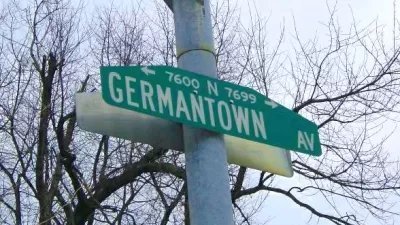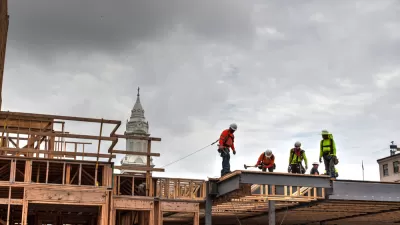A case study in development proposals not matching planning ambitions on the Delaware River Waterfront in Philadelphia.

Philadelphia Inquirer Architecture Critic Inga Saffron has noticed a trend with the development proposals originating from developer Bart Blatstein in Philadelphia:
Every couple of years, developer Bart Blatstein resurfaces with the same moldy proposal for a Super Wawa gas station on Columbus Boulevard in South Philadelphia. He knows that the Delaware waterfront master plan, which was the product of a lengthy public process, forbids new, auto-centric uses near the river. He also knows that the city has been working for years to transform the area into a walkable, urban neighborhood. But Blatstein couldn’t care less about what the public wants.
Blatstein makes the same claims to back up his proposals, according to Saffron: that the waterfront hasn't changed since the city adopted a master plan in 2011. Saffron makes the case here that Blatstein's vision is, in fact, outdated compared to changes that have already arrived to the area.
This is the second time in recent weeks that Blatstein has made development and planning news in Philadelphia, after the Philadelphia Inquirer documented a food vendor controversy connected to a development near the Spring Garden Broad Street Line stop near the Community College of Philadelphia.

Maui's Vacation Rental Debate Turns Ugly
Verbal attacks, misinformation campaigns and fistfights plague a high-stakes debate to convert thousands of vacation rentals into long-term housing.

Planetizen Federal Action Tracker
A weekly monitor of how Trump’s orders and actions are impacting planners and planning in America.

In Urban Planning, AI Prompting Could be the New Design Thinking
Creativity has long been key to great urban design. What if we see AI as our new creative partner?

How Trump's HUD Budget Proposal Would Harm Homelessness Response
Experts say the change to the HUD budget would make it more difficult to identify people who are homeless and connect them with services, and to prevent homelessness.

The Vast Potential of the Right-of-Way
One writer argues that the space between two building faces is the most important element of the built environment.

Florida Seniors Face Rising Homelessness Risk
High housing costs are pushing more seniors, many of them on a fixed income, into homelessness.
Urban Design for Planners 1: Software Tools
This six-course series explores essential urban design concepts using open source software and equips planners with the tools they need to participate fully in the urban design process.
Planning for Universal Design
Learn the tools for implementing Universal Design in planning regulations.
Gallatin County Department of Planning & Community Development
Heyer Gruel & Associates PA
JM Goldson LLC
Mpact (founded as Rail~Volution)
City of Camden Redevelopment Agency
City of Astoria
Jefferson Parish Government
Camden Redevelopment Agency
City of Claremont





























